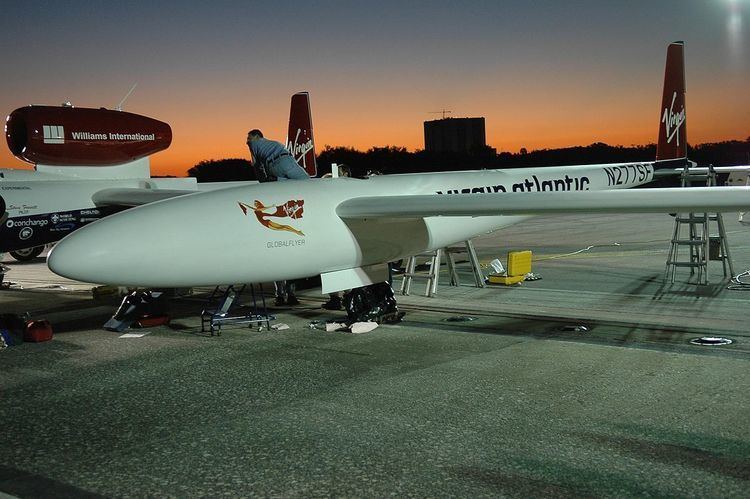 | ||
In aerospace engineering, an aircraft's fuel fraction, fuel weight fraction, or a spacecraft's propellant fraction, is the weight of the fuel or propellant divided by the gross take-off weight of the craft (including propellant):
Contents
The fractional result of this mathematical division is often expressed as a percent. For aircraft with external drop tanks, the term internal fuel fraction is used to exclude the weight of external tanks and fuel.
Fuel fraction is a key parameter in determining an aircraft's range, the distance it can fly without refueling. Breguet’s aircraft range equation describes the relationship of range with airspeed, lift-to-drag ratio, specific fuel consumption, and the part of the total fuel fraction available for cruise, also known as the cruise fuel fraction, or cruise fuel weight fraction.
Fighter aircraft
At today’s state of the art for jet fighter aircraft, fuel fractions of 29 percent and below typically yield subcruisers; 33 percent provides a quasi–supercruiser; and 35 percent and above are needed for useful supercruising missions. The U.S. F-22 Raptor’s fuel fraction is 29 percent, Eurofighter is 31 percent, both similar to those of the subcruising F-4 Phantom II, F-15 Eagle and the Russian Mikoyan MiG-29 "Fulcrum". The Russian supersonic interceptor, the Mikoyan MiG-31 "Foxhound", has a fuel fraction of over 45 percent. The Panavia Tornado had a relatively low internal fuel fraction of 26 percent, and frequently carried drop tanks.
Airliners
Airliners typically have a fuel fraction between 25 and 45 percent, so less than half their takeoff weight is fuel. The Boeing 777-200-IGW very long range airliner has a fuel fraction of 47 percent. The Concorde supersonic transport had a high fuel fraction of around 55%. Short-mid range airliners, like an Airbus A-320 has a fuel fraction of 25,96% . (For aircraft type with a maximum weight of 73500 kgrs and fuel tank capacity of 19087 Kgrs. Fraction is 24,47% for the new Ceos and Neos aircraft of the same family since they operate at 78000 kgrs) .
General aviation
The Rutan Voyager took off on its 1986 around-the-world flight at 72 percent, the highest figure ever at the time. Steve Fossett's Virgin Atlantic GlobalFlyer could attain a fuel fraction of nearly 85 percent, meaning that it carried more than five times its empty weight in fuel.
